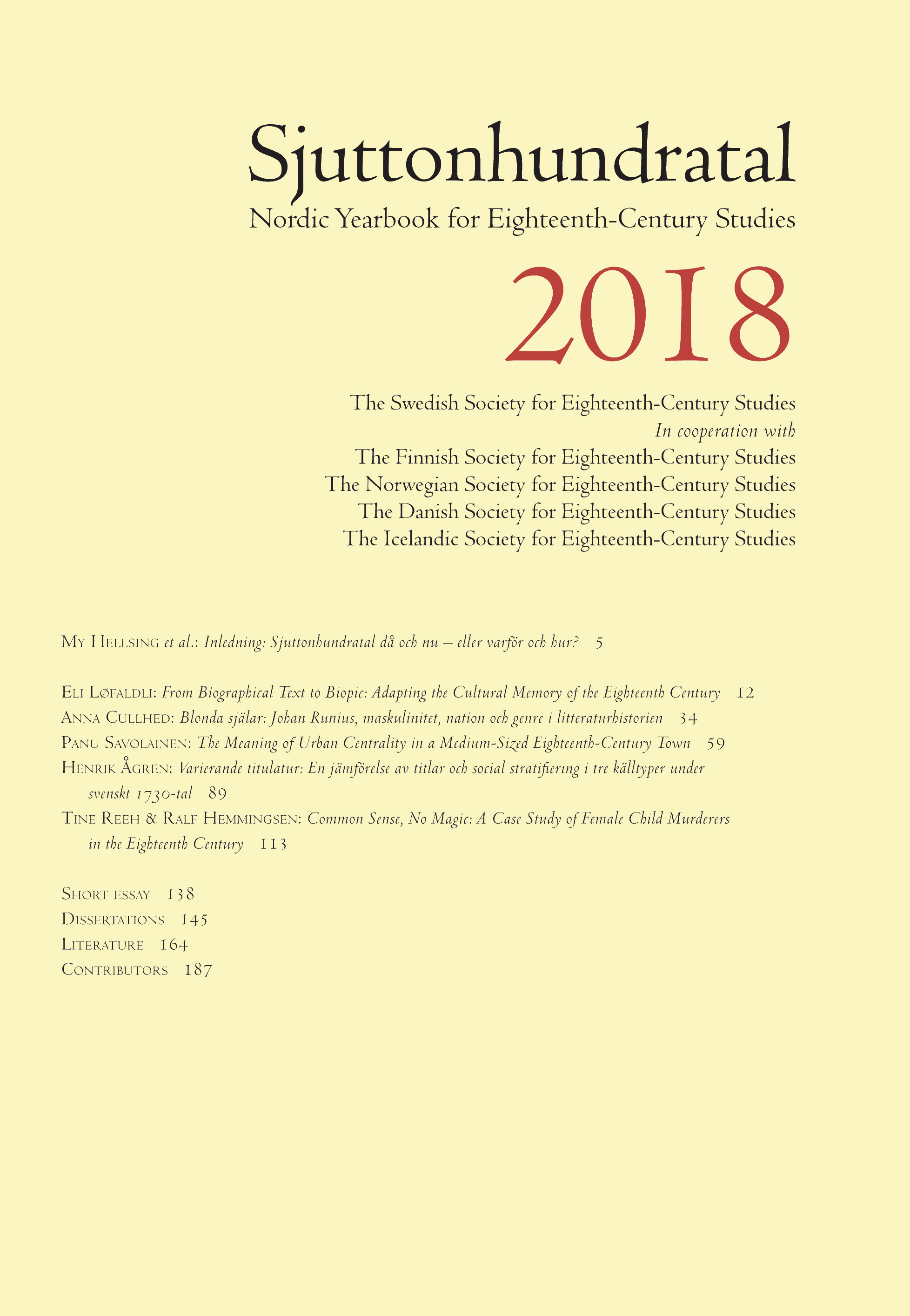The Meaning of Urban Centrality in a Medium-Sized Eighteenth-Century Town
DOI:
https://doi.org/10.7557/4.4483Keywords:
HGIS, Centrality, Urban geography, Topography, Toponymy, Spatial culture, Spatial humanitiesAbstract
During the last two decades, the spatial culture of urban societies has been explored with Geographical Information Systems (GIS) tools. This article explores the meanings of ‘centrality’, substantial in the field of urban geography but relatively seldom studied by urban historians, through the simultaneous interpretation of quantitative and qualitative spatial descriptions and datasets from the eighteenth-century Swedish town of Turku (Åbo). The concept of ‘city centre’ and ‘centrality’ emerged only at the end of the nineteenth century, and the article strives to understand how eighteenth-century townspeople conceptualised their city and how various quantifiable phenomena exhibit the spatial hierarchies, differences and thresholds of the urban topography. The empirical material consists of court minutes, newspapers, academic dissertations, various tax registers and documents of the town administration. The simultaneous examination of linguistic descriptions of the topography, the spatial distribution of property values and restaurant entrepreneurs, and spatial practices of control unveils how the town was spatially structured, experienced and conceptualised. The study reveals the different and changing patterns of geographical centrality and, moreover, raises the recently highlighted importance of spatial culture in the early modern urban experience.Metrics
Metrics Loading ...









